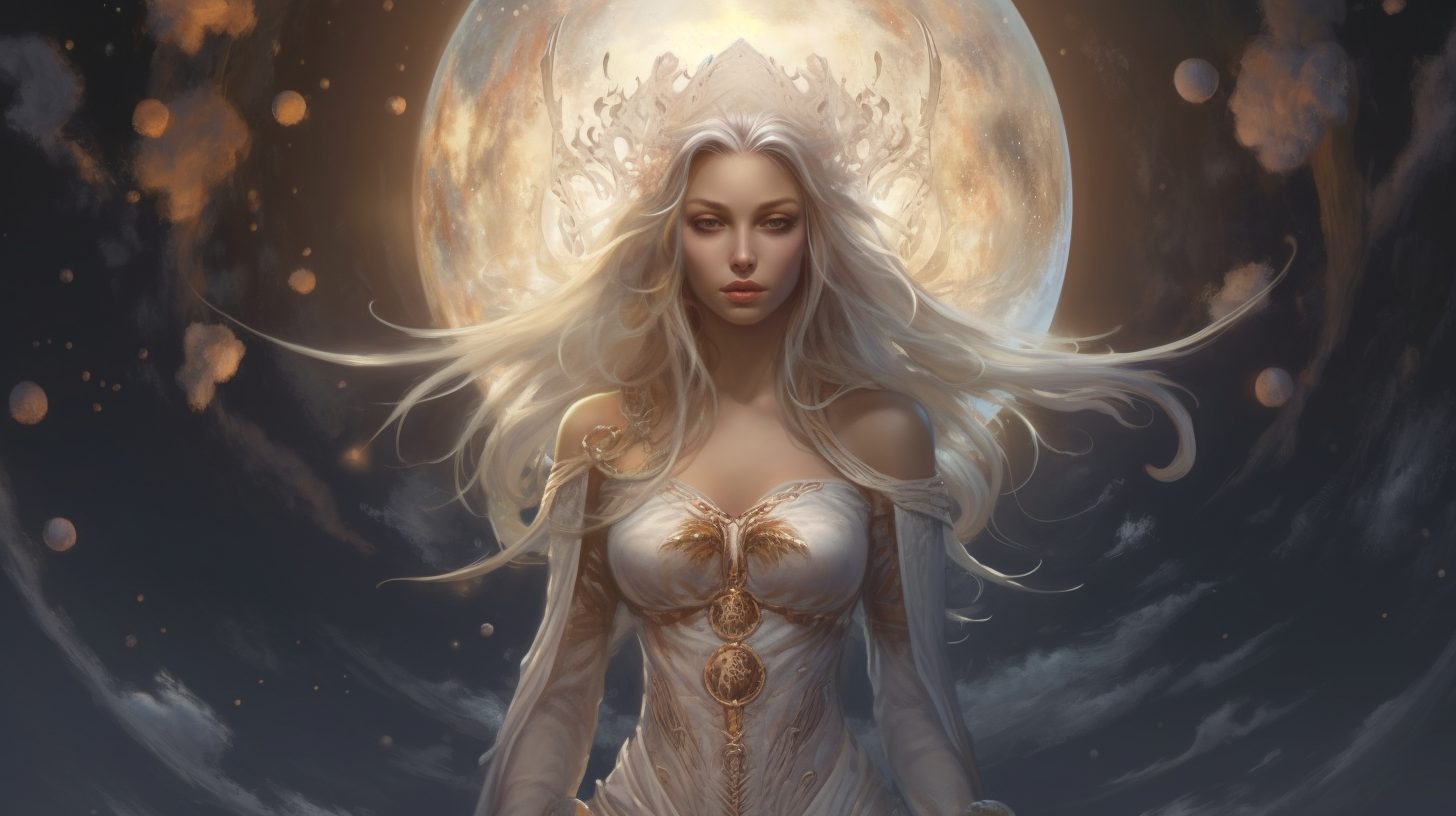Introduction:
Throughout history, the Moon has captivated and fascinated humanity, its silver glow casting an ethereal light upon our world. It has been the subject of countless myths, legends, and celestial folklore. Among the many captivating lunar tales, one stands out: the story of the Moon Goddess Luna. Join us as we delve into the enigmatic realms of mythology and explore the significance of Luna, the celestial deity of the Moon.
Unveiling Luna, the Moon Goddess:
In ancient mythology, Luna reigned supreme as the goddess of the Moon, revered by numerous civilizations across the globe. Known by various names such as Selene, Artemis, and Hecate, Luna represented the divine embodiment of the Moon’s influence and power. Her radiance illuminated the night sky, while her mystique ignited the imaginations of countless cultures.

The Lunar Influence:
Luna’s influence extended far beyond her celestial domain. She was believed to control the ebb and flow of tides, guide the cycles of fertility and growth, and govern the hidden depths of the human psyche. Luna’s presence was intricately intertwined with nature, spirituality, and the female archetype, often depicted as a nurturing and compassionate deity.
Cultural Depictions:
In ancient Greek mythology, Luna appeared as Selene, traversing the heavens in her silver chariot, illuminating the world below with her radiant glow. She was revered as the sister of Helios, the Sun God, with whom she shared the eternal duty of illuminating the Earth. Selene’s journey across the night sky represented the cyclical nature of life, death, and rebirth.
In Roman mythology, Luna emerged as an embodiment of the Moon’s influence on Earthly affairs. She was often depicted with a crescent-shaped headdress, symbolizing the Moon’s ever-changing phases. Romans celebrated Luna through festivals and rituals, honoring her role in the cosmic order.
Luna in Religions and Mysticism:
Beyond the realms of classical mythology, Luna’s influence extended into religious and mystical traditions. In Wiccan and pagan practices, Luna held a central position, embodying the divine feminine and representing the cycles of nature. The lunar calendar played a pivotal role in determining auspicious dates for rituals and ceremonies.
Moreover, Luna found her place in the mystical practices of alchemy, astrology, and divination. The Moon’s position and phases were believed to hold profound significance, influencing human emotions, behavior, and spiritual growth. Her symbolism adorned ancient talismans and amulets, offering protection and guidance to those who sought her favor.
Luna in Modern Culture:
Although the worship of Luna as a deity has waned in modern times, her presence lingers in various aspects of contemporary culture. Lunar imagery is prevalent in literature, art, and even popular music. The Moon’s allure continues to inspire poets, painters, and dreamers, evoking a sense of wonder and mystery.
Scientific Exploration and Luna:
In the realm of scientific exploration, Luna’s influence transcends folklore and mythology. Human curiosity and advancements in technology have propelled us to venture beyond Earth’s boundaries, culminating in the historic Apollo lunar missions. These groundbreaking expeditions not only expanded our scientific knowledge but also ignited a new era of lunar fascination.
Conclusion:
Luna, the Moon Goddess, remains an enduring symbol of mystery, beauty, and spiritual connection. Across cultures and throughout history, humanity has marveled at the Moon’s transformative power, attributing it to the divine entity known as Luna. Whether as Selene, Artemis, or Hecate, the lunar deity continues to leave an indelible mark on our collective consciousness. As we gaze up at the night sky and witness the Moon’s luminescence, we are reminded of the profound and timeless allure of Luna, the Moon Goddess.
